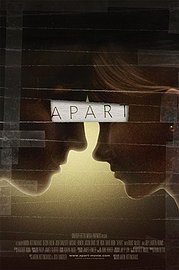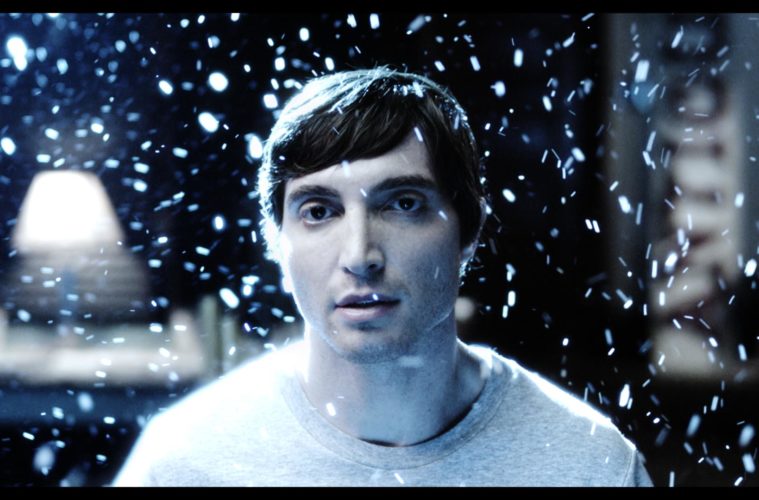
Following the premiere of their visually striking love story, Apart, The Film Stage sat down with the film’s director/co-writer Aaron Rottinghaus and star/co-writer Josh Danziger.
How did the film come about?
Aaron Rottinghaus: Josh and I have known each other for a number of years, we worked on a small indie horror film. Josh was one of the actors in the film, I was the editor. We struck up a friendship because we were one of the few people on set that were living in LA at the time. From there we started talking about things we could do together. Through that I knew I wanted to write something that was kind of a romantic drama, and Josh wanted to write a thriller. And we matched the two together when we found about induced delusional disorde), which is what our film is about.
Josh Danziger: My good friend Dr. Eubell Risen was an intern, at 3AM he called me the next morning and said “dude, you’re not going to believe what happened to me. Two people came in with gashes on their arms and they thought they had worms coming out of them” and they tested them, and it all came back negative. It turned out they had this rare, but real disorder and I told him “are you kidding me? are you making fun of me?” and he said “no, this is rare, but very real.” He sent over some case studies and research. I gave it to Aaron, and Aaron wrote 20 pages and started on and the rest was history.
What other type of research and work did you do – did you speak with anyone with this affliction?
JD: A friend of mine was also going to John Hopkins Medical School and I didn’t know this at the time but John Hopkins, before it was a prestigious medical school, was an insane asylum. And he had gotten some great case studies and history. A lot of that helped us in developing the script.
AR: The scenes involving doctors and hospitals we would write out and run by our doctor friends.
JD: “I know your saving lives today, but can you read these 20 pages and get back to us.”
What has their reaction been?
AR: They saw it on Saturday night and they loved it. I asked “are we good?” and they said “you good!”
JD: They’d call us on it if something wasn’t real. They were on set to help us out if something wasn’t right.
You shot on the Red. There’s a texture to films shot with a Red – can you talk about the look and the visualization process you went through in working with your DP?
AR: We shot on the Red, we were anti-HD or digital to begin with. We were watching the Red develop and we saw some test footage and we really loved it. We shot the football scene in the film as a test and we loved it. I love the tools it gives you as a filmmaker and I knew this was going to be a complex film structurally and to be able to bake-in different color pallets. It’s like traffic – you know where you are in the film based on the look. Also for time, being able to shoot on 4K and finish in 2K, we had a lot of room to say “hey, we can’t get the close-up here, but we’ll shoot a medium and we can bump in and get the close-up.”
The structure is non-linear. Were there any filmmakers that influenced this?
AR: Indie film is cyclic and every few years non-linear indie film comes around. While we were writing the film, I had grown sick of that kind of storytelling, and I wanted to write something linear. Then LOST came out and I was obsessed with LOST. And I wanted to tell a story in that fashion in a feature film. As far as structure is concerned that was the largest influence. As for the characters it was easier to tell the story in a non-linear fashion emotionally.
We learned up front though the characters have the affliction in a title, which was curious vs. leaving us in the dark…
AR: I honestly didn’t want to have that giant exposition scene, that banal scene where we explain what it is. So as long as you know about it up front, the film has an emotional resonance, instead of being incredibly explicit – you have the information in the back of your mind – so let’s go ahead and go.
JD: When we were developing the film we watched a lot of films, and the thing we didn’t like is dialogue that doesn’t need to be there, so some of the characters don’t speak – and we want to get through the exposition without weighing down the story and move on. And show these characters.

How about your prep for the film, Josh?
JD: Well there were three things: the preparation for knowing about the disease, people with the affliction and also the physical – coming out of the coma. The second thing, obviously the direction of Aaron Rottinghaus, I couldn’t have done it without him, and of course the third, Olesya Rulin as Emily. I couldn’t have pulled it off without those three things.
Aaron – the stills that end the film are great – can you talk about them?
AR: Yeah, thank you. We were a few days into filming and we were already behind and oh man, we didn’t get make our day. Are we going to have a movie at the end? And so I took my camera and just started grabbing snaps, thinking maybe I can supplement the rest of the film with this, maybe it can help drive the story if we need it, I don’t know how we’d incorporate it. But it’s a nice thing, because the both characters are trying to get back to a certain place, especially Emily who is trying to get back to that idyllic rosy high school period – when the world is golden hues and exciting. I thought having pictures of that community shot during those moments would bring the film full circle.
Great – what’s next?
JD: Right now our producer is talking to distributors about the film.
AR: We’ve got the Paramount (Theatre) screening coming up and the Dallas International Film Festival.
JD: One Apart is out the door we’re going to start making another one.
Great guys – thanks again for chatting and good luck with the film.

